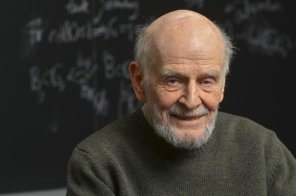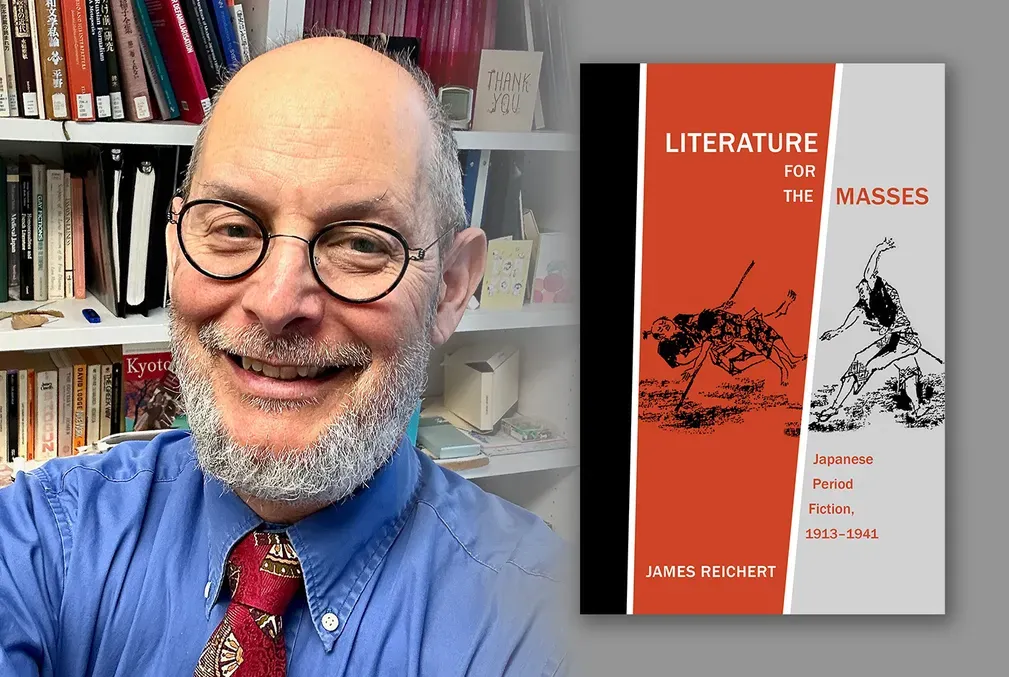Robert Finn, an expert in the mathematics of complex surfaces and capillaries, has died at 100
A Stanford professor for nearly six decades, Finn was influential in the mathematics of complex shapes and of capillary action.
Robert S. Finn, professor emeritus of mathematics in the School of Humanities and Sciences, passed away Aug. 16 in Palo Alto, California. He had celebrated his 100th birthday just one week prior.
Finn was an influential figure in a generation of mathematicians responsible for much of the foundational theory of geometric partial differential equations, providing an essential part of the analytic framework for the field of geometric analysis.
“Bob Finn was a direct connection to a vital mid-century mathematical tradition,” said Rafe Mazzeo, chair of the Stanford Department of Mathematics. “He took particular delight that some of his joint work with frequent and longtime collaborator Paul Concus on capillarity led to an experiment carried out in zero gravity on the space shuttle in the early 1990s.”
He “was an elegant and creative research mathematician who made fundamental contributions in fluid mechanics, calculus of variations, and differential geometry,” said Joel Spruck, professor emeritus at Johns Hopkins University and one of Finn’s advisees from 1969 to 1971.
Understanding capillary behavior
Finn wrote in his unpublished biography that he “made a career of predicting and characterizing unusual behavior of solutions to nonlinear equations,” that is, equations that form a curved line when their
solutions are plotted on a graph. His doctoral dissertation described a peculiar aspect of minimal surfaces (surfaces with shapes that minimize their area) without any apparent real-life application. A half-century later, his work evolved into a body of research on capillarity—the interface between two fluids or a liquid and a gas, such as a raindrop and air—and contributed to research of air flows through jets and gas flows over airfoils such as aircraft wings.
Finn is remembered for deep contributions to the study and mapping of surfaces and later to problems in hydrodynamics. His early work in the calculus of variations notably influenced the development of modern geometric analysis.
“Bob was very proud of attaching mathematical explanations to phenomena that had baffled famous scientists and mathematicians from Galileo to Laplace and giving rigorous mathematical solutions to problems that had eluded those same revered people,” wrote one-time advisee John McCuan, now a professor of mathematics at the Georgia Institute of Technology. “It was very common for Bob to write that a certain problem had been considered in the 1800s, or even in antiquity, but had seen no progress until Finn came along with his students in 1970 or so.”
Finn joined Stanford’s mathematics department in 1959 and remained an influential mathematician throughout his career, which included prior appointments at the Institute for Advanced Study, the University of Maryland, the University of Southern California, and the California Institute of Technology. He retired in 1993 but continued to teach and advise students well into his 90s. Finn received a bachelor’s degree in physics from Rensselaer Polytechnic Institute in 1943 and worked as a NASA consultant for a time before returning to higher education, earning his doctorate in mathematics at Syracuse University in 1951.
An inspirational researcher and mentor
Finn authored roughly 150 research papers and edited several academic journals. His best-known book is Equilibrium Capillary Surfaces (Springer-Verlag, 1986), which applies mathematical rigor to capillary action. He earned two Guggenheim Fellowships, in 1958 and 1965, and was a Fulbright Fellow in 1987. He was awarded an honorary doctorate at the University of Leipzig in 1994.
As an adviser he was greatly admired by his students. Finn supervised the dissertations of 30 doctoral students and was a visiting professor at more than 10 universities around the world.
“Bob loved being a Stanford professor, and his graduate lectures were highly original and informative since he did not like regurgitating the standard material in textbooks,” Spruck said.
“As a graduate student in Australia, I was inspired by reading Bob Finn’s ingenious papers on equations of minimal surface type,” said Finn’s Stanford colleague Leon Simon, now a professor emeritus of mathematics. “I remember with gratitude his kindness and encouragement when, a few years later, I met him at Stanford.”
Finn was born in Buffalo, New York, on Aug. 8, 1922. As an undergraduate, he studied physics in the age of the Manhattan Project, but mathematics was forever his first love.
“I think everyone who does math knows from an early age that he wants to do that,” Finn said in an unpublished interview. “I know that at a young age I sensed that I wanted to do mathematics even though I had no clear idea as to what mathematics was. My father couldn’t understand that. He was very concerned about my getting a job and having a secure life. He wanted me to be a businessman or a football player.”
Finn’s father never quite came to grips with his son’s passion, and Finn became an engineer for a time as a compromise. “I couldn’t quite make my father understand what motivated me,” he recalled. Finn bided his time, saved his money, and then, on a day’s notice, quit his engineering job to enter a doctoral program at Syracuse to study math exclusively.
Finn is survived by his wife, Ursula (Ulla) Schulte; his daughters, Marty and Barbara; and two grandchildren, Justin Finn Fabrikant and Evan Finn Fabrikant. Memorial details will be announced at a future date.




